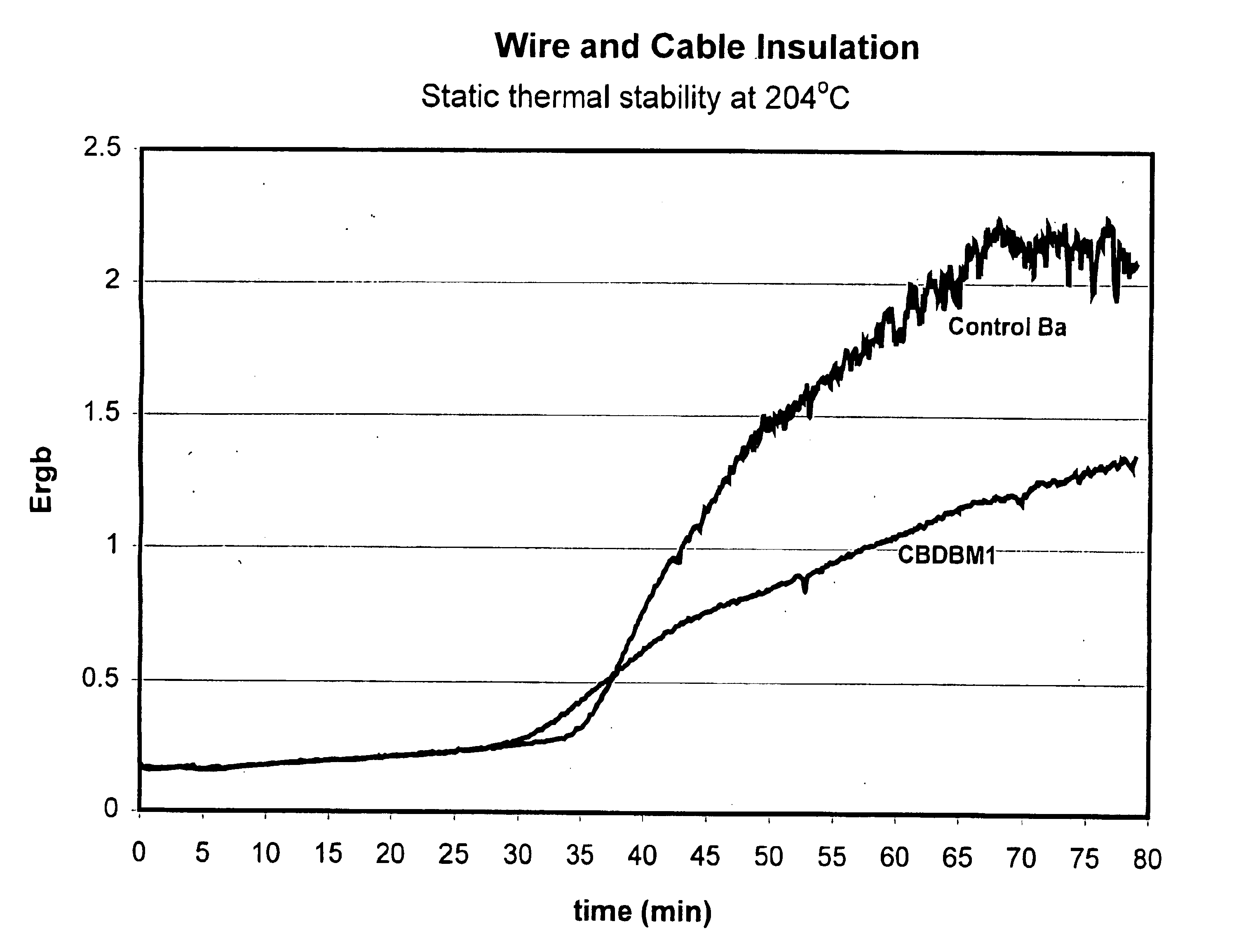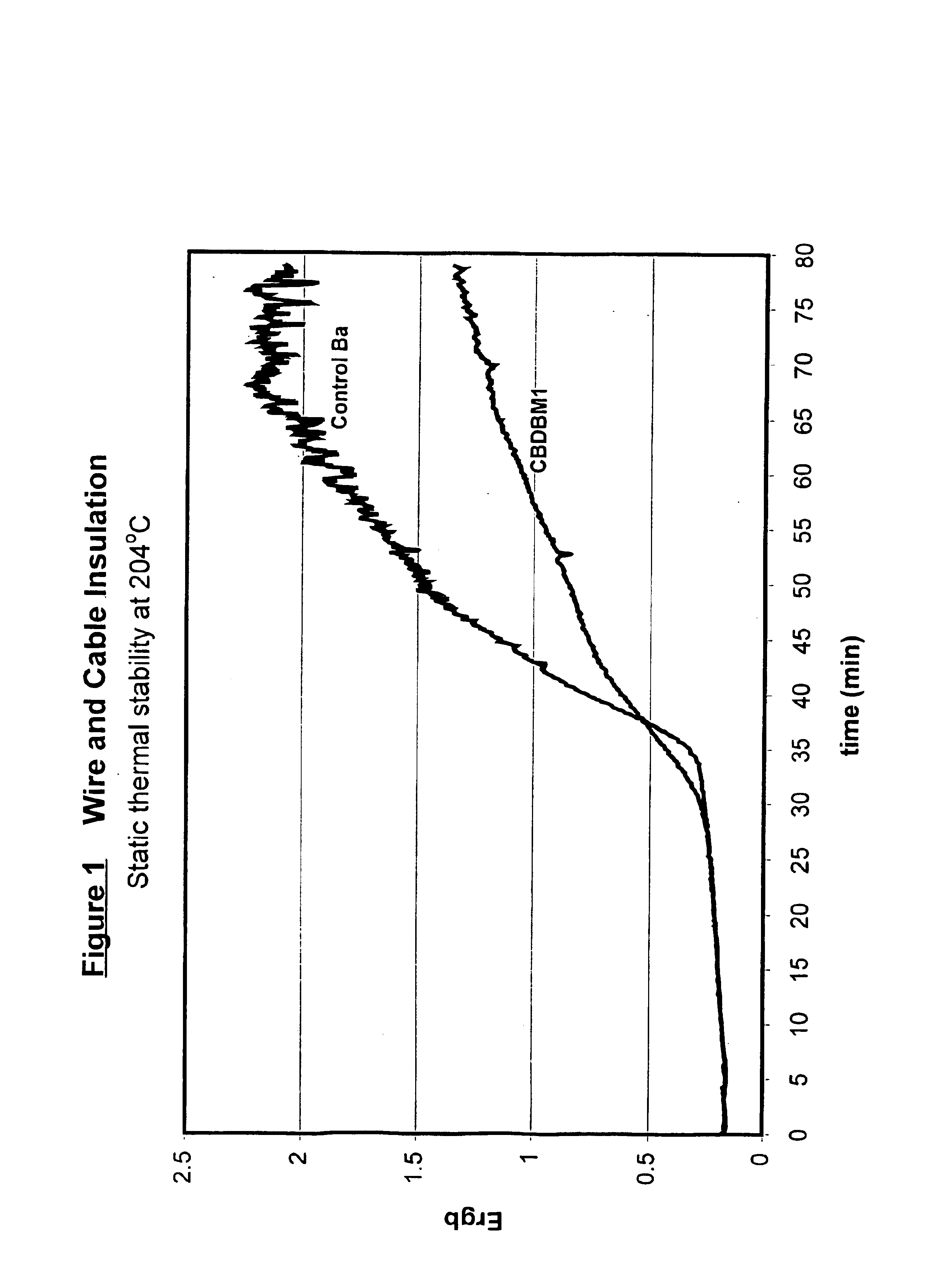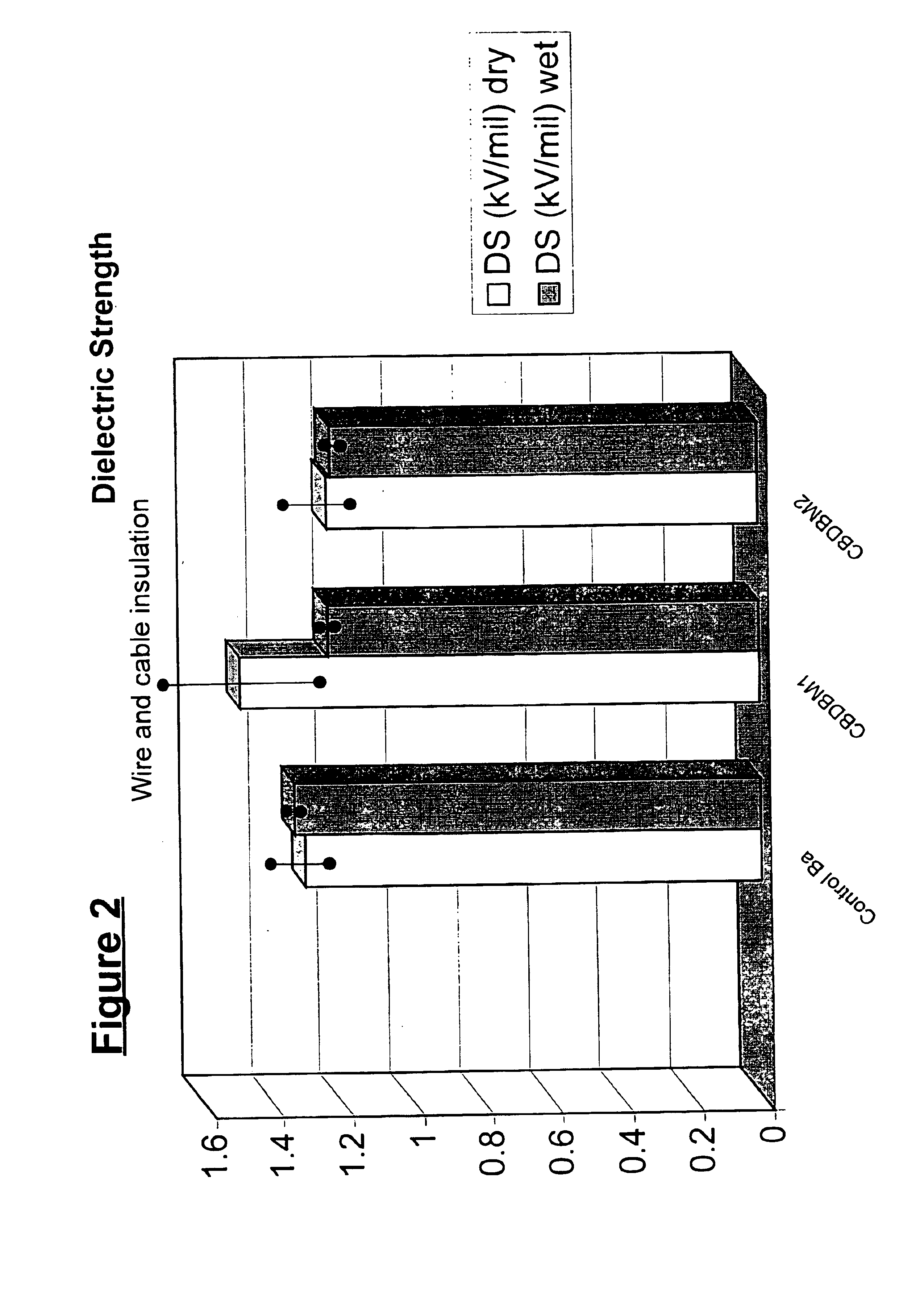Complexes of metal salts of organic acids and beta-diketones and methods for producing same
a technology of organic acids and compounds, applied in the field of complexes of organic acids and betadiketones and methods for producing same, can solve the problems of inherently unstable heat and decomposition of halogen-containing resins, particularly polyvinyl chloride resins, degrading mechanical properties, and other objectionable changes in the physical properties of finished products, so as to improve heat stability and resistance to discoloration, reduce production costs, and improve efficiency
- Summary
- Abstract
- Description
- Claims
- Application Information
AI Technical Summary
Benefits of technology
Problems solved by technology
Method used
Image
Examples
example 1
CBDBM was prepared by a Claisen condensation of acetophenone and methylbenzoate using calcium oxide as the base. The condensation procedure consisted of heating acetophenone (270.3 g; 2.25 mol), methyl benzoate (1838 g; 13.5 mol), and calcium oxide (168.24 g; 2.7 mol) at 195-200° C. with stirring for 3.5 hours, in a 5 L round bottom flask, under a stream of nitrogen. During the reaction, methanol was collected by distillation. CBDBM was precipitated by successive addition, under vigorous stirring, of water (700 mL), heptane (700 mL), and after several minutes, 450 mL more of water. The precipitate was filtered under vacuum through a Buchner funnel with paper filter, and the material was washed several times with heptane (4,355 mL total washes) and dried under vacuum. 962.0 g of CBDBM was obtained, with a content of 42% DBM (measured by UV absorption of a solution in DMSO). This represents a yield of 80% for the condensation reaction, based on acetophenone. The content of calcium was...
example 2
The reaction was carried out as in Example 1, on a 0.5 L scale. Acetophenone (30.05 g; 0.25 mol), methyl benzoate (204.2 g; 1.5 mol), and calcium oxide (18.7 g; 0.3 mol) were heated at 195-200° C. with stirring for 3.5 hours, in a 0.5 L round bottom flask, under a stream of nitrogen. During the reaction, methanol was collected by distillation. After the condensation, the reaction mixture (136.9 g) was stirred for a few minutes with heptane (250 mL). After decanting and separating the heptane, treating again with heptane (200 mL), filtering under vacuum, and washing three times with heptane (250 mL, 75 mL, 75 mL), 67.42 g of calcium DBM complex was obtained. UV analysis showed 40.17 weight % of DBM, which corresponds to a yield for the condensation of 83% based on acetophenone.
In Examples 3-8 below, the heat stability of several PVC formulations was examined using CBDBM as a replacement for barium intermediates. PVC sheets were milled at 170° C. and strips were tested using a Mathis ...
example 3
Wire and Cable Application
5 phr of a calcium / zinc stabilizer based on CBDBM was added to PVC compound. A barium based stabilizer was used as a control. PVCs treated with these stabilizers were heated to a temperature of 204° C. and discoloration (Ergb) of the PVC compounds was determined over time; the results of these measurements are set forth in FIG. 1. The dielectric strengths of the PVC compounds containing these stabilizers are set forth in FIG. 2.
PUM
| Property | Measurement | Unit |
|---|---|---|
| temperature | aaaaa | aaaaa |
| temperatures | aaaaa | aaaaa |
| temperature | aaaaa | aaaaa |
Abstract
Description
Claims
Application Information
 Login to View More
Login to View More - R&D
- Intellectual Property
- Life Sciences
- Materials
- Tech Scout
- Unparalleled Data Quality
- Higher Quality Content
- 60% Fewer Hallucinations
Browse by: Latest US Patents, China's latest patents, Technical Efficacy Thesaurus, Application Domain, Technology Topic, Popular Technical Reports.
© 2025 PatSnap. All rights reserved.Legal|Privacy policy|Modern Slavery Act Transparency Statement|Sitemap|About US| Contact US: help@patsnap.com



